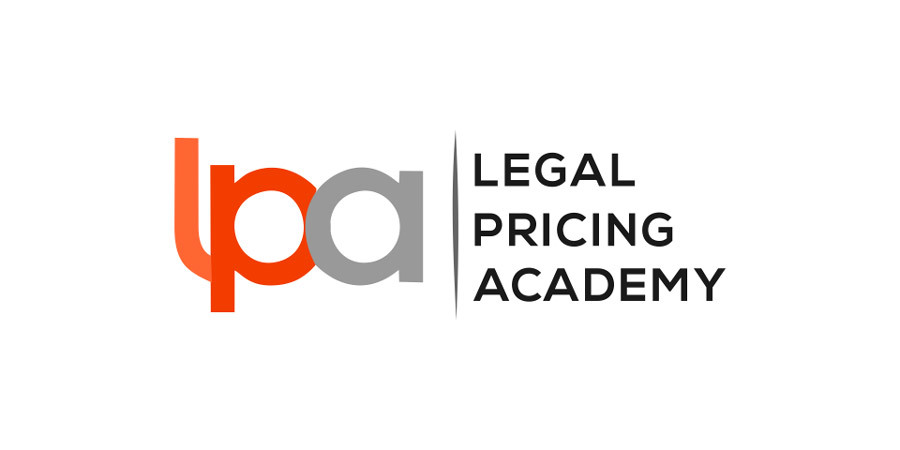If I never hear the word ‘unprecedented’ again, it will be too soon, but there is undoubtedly no play book for what we are experiencing. We have had numerous requests from client firms and non-client firms alike for guidance on how to approach pricing in the current environment. We hope that the following will if nothing else, provide some structure to law firm’s consideration of the issues.

Firms response should be driven by two seemingly diametrically opposed objectives;
- a) Liquidity and cash flow, and
- b) Preserving pricing consistency and continuity
Liquidity and cash flow
In the short term for most law firms, cash will be the most important consideration as it is likely that for most firms incoming cash will decline rapidly - as other businesses and individuals consider how they spend their cash, it is less likely that settling outstanding legal fees will be at the top of the list.
Understanding the cash point is wider however; for example, you may have a workforce that is very busy, reporting lots of matter starts and recording lots of time. However, if this work stream is not going to generate the cash you need (when you need it) you may still need to take action to reduce staff costs and capacity by either considering short working weeks or even redundancies.
Unfortunately, matters have been made worse by many firms extremely lax attitude towards lock-up. As reported in The Lawyer this morning, “…the warning signs were there for anybody who cared or dared to look. The Lawyer’s recent UK 200: Operational Health Check report found that lockup at a significant number of firms had reached a five-year high. At the 2018/19 year-end, the average lockup at a representative sample of UK 200 firms stood at 140.8 days, a rise of more than seven days from 133.6 in 2014/15.”
Preserving pricing consistency and continuity
The global financial crisis in 2008 was the catalyst for law firms to engage in ill-considered and unsophisticated price slashing in a desperate attempt to keep people busy and maintain market share and cashflow. Firms were also put in a position by many clients where they either agreed to concessions demanded by clients or they ran the risk of losing the client and the revenue stream completely. Negotiation strength was completely asymmetric in favour of clients.
Many business owners, including law firm management would now agree that they did not move swiftly enough at the time to reduce capacity. Yes, I appreciate that this is a thoroughly unpleasant euphemism for making people redundant and any advice or commentary from us on the topic is neither helpful nor appropriate. We simply flag it.
Just as damaging, many firms realised in the cold light of day, that they had made a medium to longer term rod for their own backs by agreeing pricing arrangements with clients who then made it exceptionally difficult for them to row back from once the economy began to recover. There are still many clients paying rates that don't come close to inflation-adjusted rates from 2007. In the long run, saying no and potentially losing the client would have been better.
In contrast, some firms made a conscious decision to try to preserve the integrity, consistency and continuity of their pricing and find other ways to satisfy the demands of their clients whilst at the same time reducing their own capacity and cost overheads.
In so doing, they were far better positioned to capitalise on their historical brand strength and resulting pricing strength and the relatively stable pricing base that they found themselves occupying as things began to recover. In other words, their recovery began from a position of comparative advantage.
Set against the two foregoing objectives, we offer the following thoughts.
Eliminate billable hours and fee targets
When announcing his £330 billion business package, the Chancellor made it clear that this was not a time for economic and financial dogma. The same blue-sky thinking is now required of law firms. We have for many years maintained that many aspects of law firm’s meritocracy structures incentivise sub-optimal pricing behaviour. This is particularly apparent with billable hours and fee targets.
Large numbers in your workforce are going to be extremely concerned about their jobs, ranging from equity partners to NQs. There will be a profound disconnect between the interests of individuals and the interests of the firm. People will prioritise their personal interests as opposed to those of the firm. If you want everyone in the organisation aligned to the best interests of the firm, you should seek to remove immediately any structures that might impede that.
Silos need to be broken down quickly, aggressively delegate work that can be, redeploy capacity to busy areas of adjacent expertise and ensure highest and best use of all talent without regard to any other consideration.
And lest you should think that this is inconceivable, it is worth noting that two of the most profitable law firms in the UK top 50, do not have billable hours targets.
In many firms, this will have a consequential effect on remuneration but as with all of the students who are no longer able to sit their year-end exams, they have been reassured that they will be assessed on the performance preceding the impact of COVID-19. Firms should consider doing something similar.
Centralised pricing control
For the reasons outlined above, individual partners will be making all manner of unilateral pricing arrangements with clients that are not necessarily in the best interests of the firm. In some cases, this will border on anarchy. It is absolutely essential that some control is introduced. Some firms will already have in place pricing governance structures, but even these may need to be further tightened.
Practically speaking, each firm will need to determine what arrangements are best suited to the firm's current culture and operational structure, but the central theme is a simple one; individual pricing autonomy and discretion should be very significantly curtailed for the time being. This will be particularly challenging for firms that operate a traditionally light touch in this area, but it is essential.
Segment your practice areas
The impact of these developments is not falling evenly. Rather, there seem to be three broad groupings from a practice area perspective. There are those that are ticking along, largely business-as-usual, there are practice areas that have been severely negatively impacted such as transactional property and M&A activity and there are those that are frantically busy such as employment, commercial, finance and insolvency/restructuring.
It makes no sense at all to apply the same approach to pricing across these areas. A particular problem in this regard will be clients whose workload with you transcends these different practice areas and it will therefore be important for you to manage those conversations in a way that allows you to apply an appropriately nuanced approach to price sensitivity based on practice area supply and demand.
Segment your clients
Clients and sectors should also be segmented to enable a more systematically nuanced approach to pricing each of them. One of the major failings of most firm’s current approach to pricing is what we could describe as a one-size-fits-all mentality. This has never been optimal but the weakness of this approach will be brought into unavoidably sharp relief in the current crisis.
As with practice area segmentation, it makes no sense at all to be applying the same approach to pricing with clients that are currently engaging in mass redundancies versus those that are currently employing tens of thousands of people to meet exploding demand.
Client and practice area segmentation referred to in this and the preceding section is something that we captured in a price sensitivity info graphic we developed a while ago. Here is the link again.
Strategic and tactical discounting
Price reductions can be implemented almost immediately to stimulate demand although firms should be very wary indeed about using pricing to stimulate demand. The current crisis is a demand crisis, not a cost crisis.
However, if you do choose to do so, it is critical to know the price elasticity. The price sales curve for large price changes is not linear. It has a kink - the point at which the discount is sufficient to stimulate demand. Is it 10%, 20%, 30% or 50%? If you don't know that or don’t have a pretty fair idea, you are taking a big risk.
A price reduction that is too small does not result in a significant sales increase - it only sacrifices the profit margin. You have to go beyond the kink, but not too far beyond it. If you go too far down, sales volume may explode, but it will do so at the expense of the profit contribution margin. With high fixed costs this can lead to disastrous losses.
If clients genuinely cannot afford your usual offering, consider a stripped back version - bronze instead of platinum.
As noted, one of the two key objectives are liquidity and cash flow. It is safe to assume that there will be opportunistic requests for discounts. Almost without exception, any requested discount should be conditional upon payment in advance/on account or seven-day payment terms. In the current environment, there has to be a quid pro quo.
Add value rather than discount
It is crucial that firms try to maintain pricing consistency, continuity and integrity. Failure to do so leads to longer term effects that can be difficult to recover from;
- a) Brand strength and corresponding pricing strength are diminished, and this can take a long time to recover from and rebuild even once the broader economic environment has improved
- b) The firm's ultimate recovery will be projected from a much lower starting point.
So how does one show willing with clients in a time of crisis? Many clients really need your support at the moment. There are many ways in which you can demonstrate this with timely, relevant and holistic advice and support, not all of which can or should be charged for. Mayer Brown, Eversheds Sutherland, Allen & Overy, Mishcon de Reya, Hogan Lovells and Fieldfisher have all established COVID-19 working groups to help clients.
As Ranjit Dhindsa, head of employment at Fieldfisher, told Legal Business: ‘The hub has expanded into having all the different advice you may need in one place. It has employment lawyers, commercial contract advice, litigation advice, insolvency lawyers, if your business can’t survive. What we have done is forget about expertise in isolation. When a board is in crisis you want the whole picture.’
Pricing ethics
I’m sure that it goes without saying, that through good times and bad, pricing should always be executed with integrity. At a time like this it is more important than ever to balance the profit imperative with commercial propriety. We have already seen examples of appalling opportunistic pricing behaviour that should rightly come back to haunt those organisations in due course.
Powerful & visible leadership
As we can all see as we watch events unfold, situations like this bring out the very best and the very worst in us. The vast majority of people do the right thing when asked, but sadly there will always be a number that have their own priorities. There is no room in any organisation for renegades at a time like this. Even in the most collegiate and non-hierarchical of firms, difficult decisions will need to be made and the firm's leaders will need to make them. Indecision and tardiness are likely to prove costly.
Moreover, now is the time to create a shared and unambiguously articulated vision of what the next few months looks like, where the firm is going and what is expected of everyone. This extends well beyond the issue of pricing but to the extent to which pricing generates the firm's lifeblood, all else becomes irrelevant if we don't get this right.
Richard Burcher, Managing Director

